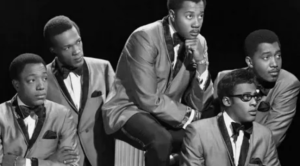
The Temptations: A Masterclass in Soul Harmony with “Get Ready”
“Get Ready” stands as a towering monument in the Motown canon, and The Temptations’ interpretation is its crowning achievement. This infectious, upbeat number, penned by the inimitable Smokey Robinson, marked a pivotal turning point for the group, transitioning them from their ballad-oriented roots to a more dynamic, dance-floor-focused sound.
Background
Released in 1966, the song was a calculated response to the contemporary dance craze, “The Duck.” However, its enduring appeal transcends this fleeting fad. The Temptations’ vocal prowess, honed through years of meticulous harmonizing, is on full display. Eddie Kendricks’ lead vocal, a soulful and mellifluous instrument, is perfectly complemented by the rich, resonant harmonies of David Ruffin, Otis Williams, Melvin Franklin, and Paul Williams. Their vocal interplay is nothing short of extraordinary, creating a sonic tapestry that is both intricate and exhilarating.
Smokey Robinson’s production is equally masterful. The song’s arrangement is a model of economy, with each element serving a clear purpose. The rhythm section provides a solid foundation, while the horns add a touch of brassy exuberance. The overall effect is a track that is both sophisticated and infectious.
Moreover, “Get Ready” holds a significant place in the broader narrative of Motown. It was the last song produced by Smokey Robinson for The Temptations before the influential Norman Whitfield took the reins. This transition marked a pivotal moment in the group’s career, as Whitfield’s production style would propel them into a new era of psychedelic soul. Yet, “Get Ready” remains a testament to the creative partnership between Robinson and The Temptations, a perfect synthesis of their respective talents.
In conclusion, “Get Ready” is more than just a popular song; it is a cultural artifact that encapsulates the essence of Motown and The Temptations at their creative peak. Its enduring appeal lies in its infectious melody, impeccable harmonies, and the sheer joy it evokes. It is a song that continues to inspire and delight audiences of all ages, a testament to its timeless quality.